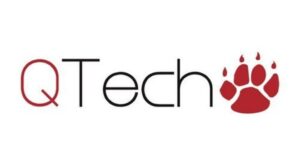Key Moments:
- FanDuel and DraftKings have maintained dominance in the US, creating significant acquisition challenges for smaller operators.
- Mobile wagering represents approximately 90% of total handle in regulated US states, highlighting the importance of a mobile-first strategy.
- Personalized advertising campaigns have been shown to achieve a 5–8x ROI, while weekly creative optimization can increase click-through rates by up to 50%.
Market Dynamics and Operator Challenges
The US gambling landscape is uniquely fragmented, with each state imposing distinct regulations and exhibiting varied consumer preferences. This diverse environment poses notable challenges for operators attempting to establish and maintain a foothold, especially against established industry leaders such as FanDuel and DraftKings. In the early stages, these leading brands relied on robust budgets and extensive daily fantasy sports recognition to execute aggressive, bonus-driven campaigns. Such tactics, while effective for them, are typically out of reach for smaller competitors with modest resources, making efficient and sustainable customer acquisition strategies essential for survival.
Adopting a Mobile-First Mindset
Mobile wagering is an overwhelming force in the US, now accounting for nearly 90% of betting handle in regulated territories. While operators may not have ignored this trend, its full impact has sometimes been underestimated. Success demands a mobile-centric approach not just in user acquisition (UA) and retention, but throughout the entire user experience (UX). Brands aiming to thrive must develop campaigns and customer relationship management (CRM) strategies tailored specifically for mobile users. This encompasses crafting visually appealing creatives and ensuring seamless end-to-end journeys—all designed to minimize user friction and foster long-term loyalty.
Data-Driven User Acquisition Approaches
Effective UA in today’s market hinges on the union of analytical rigor and creative innovation. Essential tactics include leveraging consumer insights, employing predictive modeling, and running campaigns that extend across mobile apps, desktop, and major advertising networks such as Google, Meta, TikTok, Snap, Unity, Moloco, and various demand-side platforms (DSPs). Artificial intelligence tools enable hyper-personalized, dynamically optimized campaigns, delivered to precisely targeted segments. Real-time tracking and ongoing adjustment are fundamental to maintaining campaign relevance and performance.
| Performance Metric | Reported Impact | Source |
|---|---|---|
| Personalized Advertising ROI | 5–8x ROI, >10% increase in sales | McKinsey |
| Weekly Creative Optimization | Up to 50% higher CTR | Meta Performance Marketing Insights |
| Personalized Creative Conversion Rate | Up to 5x increase | Internal Data |
| Creative Refresh Impact on CPA | Up to 30% reduction | Wordstream |
Retention Through Lifecycle Management
Ensuring ongoing player engagement requires robust lifecycle management, extending from initial deposit to VIP experience. Operators must segment their audience to deliver tailored offers and communications, thereby building loyalty and maximizing player value. Utilizing a diverse communications toolkit—including email, push notifications, SMS, and in-app messaging—enables continuous relevance and drives engagement. Real-time event triggers and performance analytics are vital for identifying critical moments of user intent and optimizing strategies accordingly.
The Crucial Role of Creative Strategies
Creatives are pivotal in both acquiring and retaining players at scale. Executing high-performing, AI-driven campaigns, supported by frequent data analysis and A/B testing, consistently yields elevated results. Personalization is particularly impactful, often driving significantly improved conversion rates and reduced acquisition costs. Regularly updating campaign creative assets ensures sustained effectiveness and cost efficiency, reinforcing the necessity of both analytical attention and creative evolution in competitive markets.
- Author


